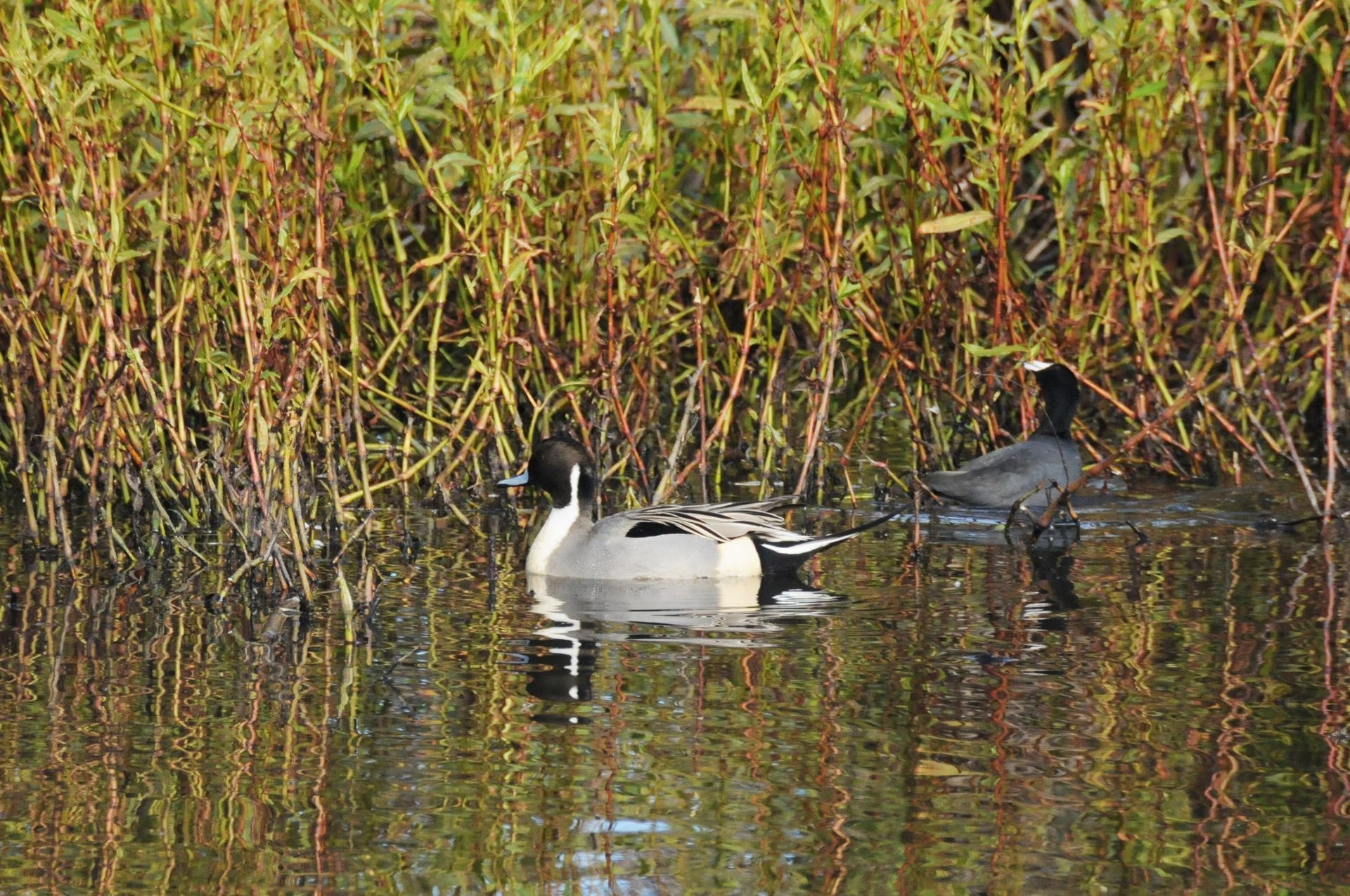Monumental Questions - Where can I go bird watching in Berryessa Snow Mountain National Monument

Northern Pintail and American Coot at Colusa National Wildlife Refuge
Berryessa Snow Mountain National Monument's location makes it a great place to view migrating birds. Many birds migrate through, visit, or over-winter in the region. Whether you are an experienced birder or don't know the difference between a warbler and a coot, a day spent viewing birds through binoculars is a great day! Where can you look at birds?
There are many National Wildlife Refuges in the Sacramento valley that offer refuge for migrating birds. This time of year, these sactuaries are full of waterfowl - snow geese, teals, mallards, pelicans. In addition, visitors can see Northern Harriers, Red-tailed Hawks, Great Horned Owls, and even Bald Eagles! The Sacramento National Wildlife Refuge offers a 6-mile auto tour while the Colusa National Wildlife Refuge has a 3-mile auto tour.
Clear Lake and the surrounding freshwater marshes and corresponding riparian ecosystems provide great habitat for many birds. Clear Lake State Park and Anderson Marsh State Historic Park are good places to see Great Blue Heron, Double Crested Cormorants, and breeding Bald Eagles. South of Clear Lake State Park is also a great place to see the amazing mating dances of Clark's and Western Grebes.
Many birds call Lake Berryessa home - for at least part of the year. Osprey can be seen soaring over the lake or in their nests high above the water. Pelicans, Bald Eagles, and Loons are frequent visitors. The many day use areas on the west side of the lake provide trails and great viewing areas. The road on the east side of the lake is also open to birders - please stay on the road!
A couple other great places are Lake Solano and Moore Creek Park.
Berryessa Snow Mountain National Monument lies just west of the Pacific Flyway and hosts a variety of birds throughout the year. Winter provides a home for many birds escaping the freezing temperatures in Canada and Alaska. Many of these have bands on their legs or neck. If you are able to read the numbers on the band, you can use this website to find more information about the bird (age, location of birth, where it travels, etc).
-Nate Lillge; nlillge@tuleyome.org
Adventures and Engagement Director
Certified California Naturalist
RECENT ARTICLES






